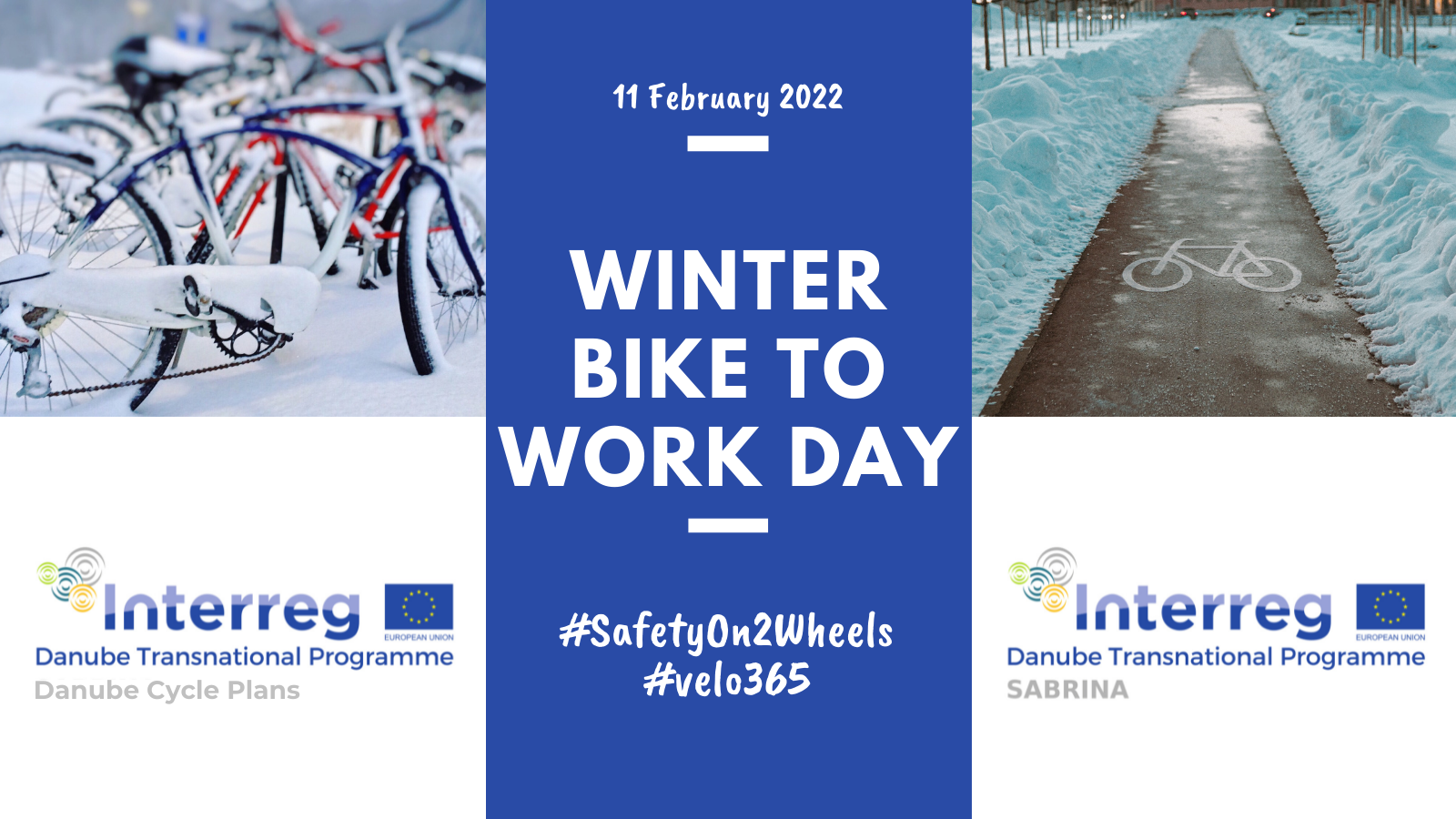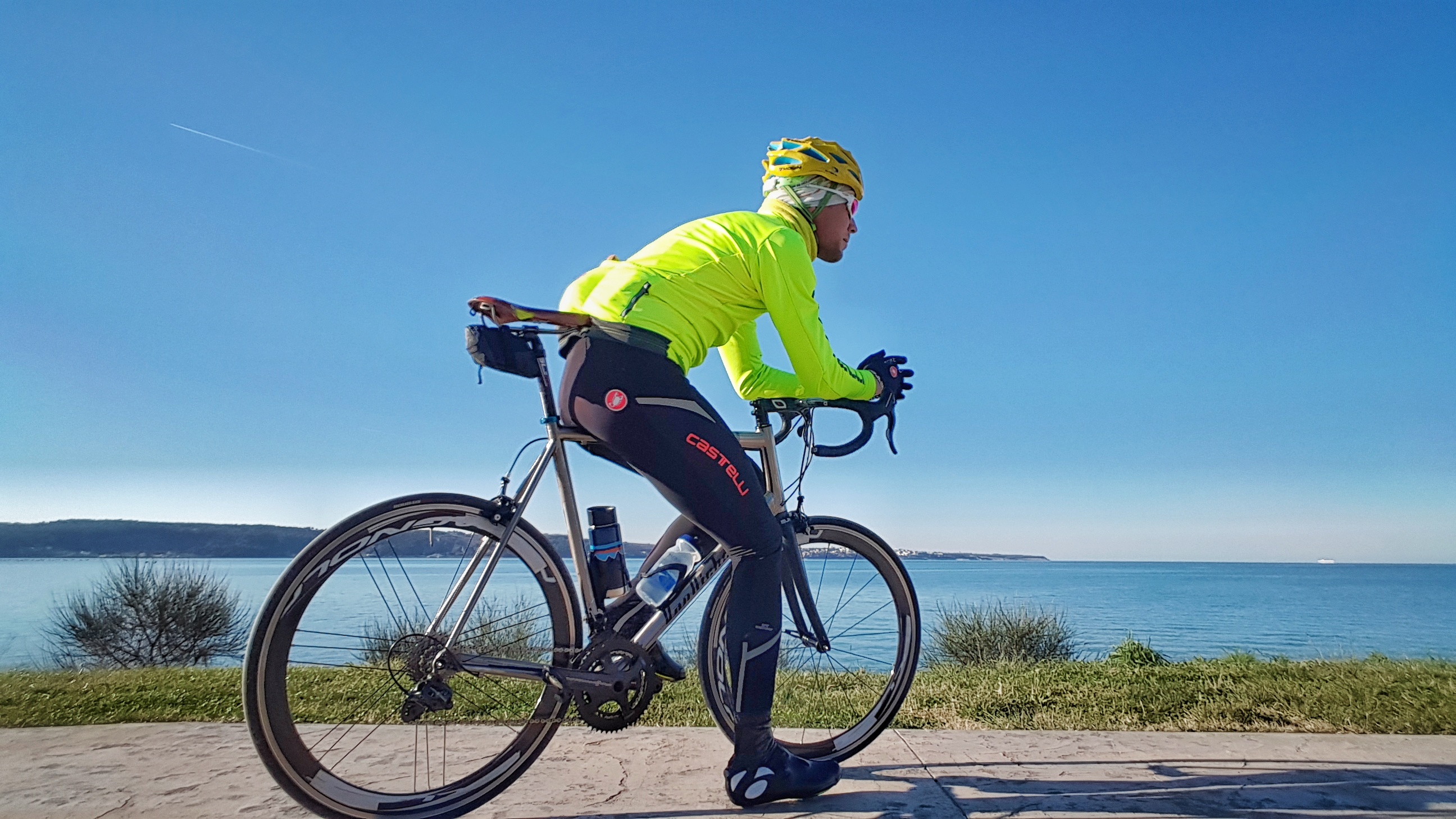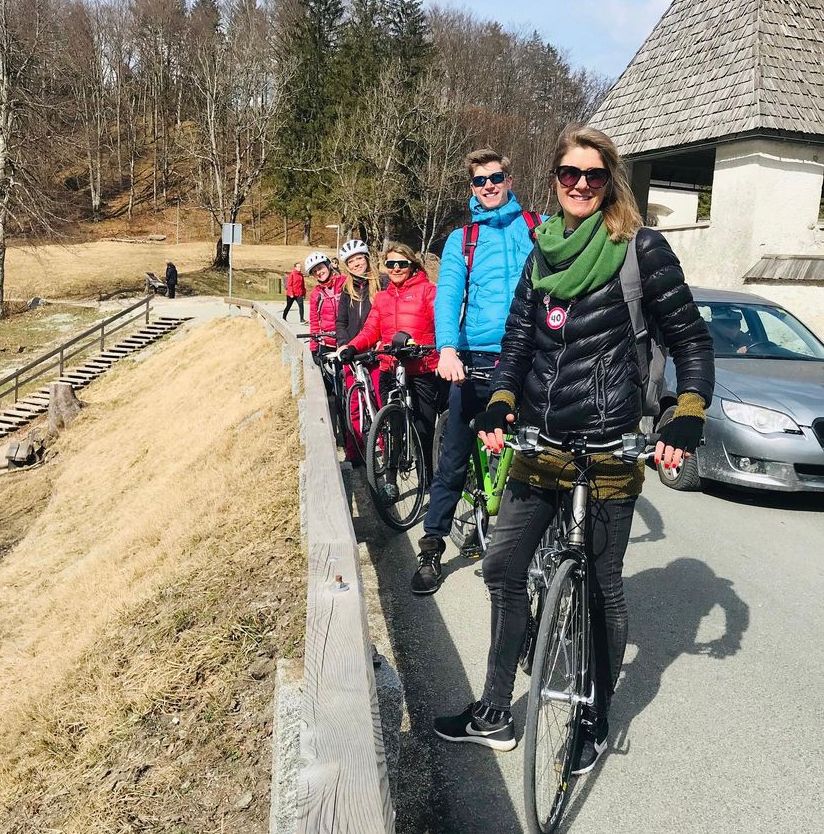SABRINA - WINTER BIKE (TO WORK) DAY 2022 IN SLOVENIA
11-02-2022
Friday, 11 February 2022, is dedicated to Winter Bike to Work Day. The idea for this international initiative is connected to Bike to Work Day, an annual event with origins back in 1956. The winter edition is usually held on the second Friday in February. The goal is to encourage more people for year-round use of bicycle as a climate-friendly mode of transport and to prove cycling is more fun than it first seems even in colder months of the year.
Many people are convinced that the winter months keep only the hardest cyclists on their bikes. However, different research on winter cycling has shown that in cities with cold winters, there is almost no correlation between winter temperatures and the amount of winter cycling. It is a myth that people do not cycle in the winter because of the cold. There are two things that keep them cycling year-round: (1) a network of safe bicycle paths and (2) proper maintenance of the bicycle network in the winter.
The partners of the SABRINA project strongly believe that safe cycling infrastructure is the key when it comes to more biking at any time of the year. When people feel safe on their bikes, cycling becomes attractive for bicyclists of all ages and abilities. Besides the SABRINA project, there is another Danube Transnational Programme project dealing with cycling: Danube Cycle Plans. We have joined forces on different occasions, most recently with the Joint newsletter in December 2021.

For Winter Bike to Work Day 2022, we have connected again and prepared a challenge in Slovenia. The Slovenian Ministry of Infrastructure is involved in both projects. In the SABRINA project team, there are two more partners from Slovenia: the European Institute of Road Assessment as the lead partner of the project and the Municipality of Ilirska Bistrica. We have linked with a Cycling Network from Maribor (note: in Slovenian), which has prepared a Strava challenge to encourage as many people as possible to hop on their bicycles and cycle to work, school, to do the errands, to visit family and friends or for recreation. We are inviting everyone to share their winter cycling adventures and the photos of good and not so good cycling infrastructure examples on social media with the #kolo365 (#velo365 in Slovenian) and #SafetyOn2Wheels.
We have also asked five bicycle users about their experience with winter cycling in Slovenia. Anže (44) from Ljubljana works as a food delivery guy on a bike, so he cycles around the Slovenian capital as part of his job on a daily basis, besides being an avid recreational cyclist. Apart from his job, he mostly uses his bicycle to bike around the city, visiting friends and family and doing some smaller errands. This can be challenging when the snow comes since the priority for winter maintenance is given to the roads with motorized vehicles, only later the cycling and pedestrian infrastructure is cleaned. He doesn’t bike longer distances recreationally in the winter months because the roads are not well maintained from the cyclists’ point of view (gravel etc.) and he doesn’t feel very safe. “In spring and summer months, my favourite free time activity is cycling. I am an experienced cyclist but I choose my routes wisely and try to avoid busy roads as much as possible. I wish Slovenia would have more dedicated safe cycling infrastructure in non-urban areas.”
Staša (40) is also from Ljubljana and uses her bike in the winter mostly for commuting to work which is approximately 4km away. For Staša, a bicycle represents the most convenient choice of transport, besides doing something good for the environment and her own health. She agrees with Anže, that it becomes challenging to bike around the city when it snows since it takes a while for cycling infrastructure to be properly cleaned. “If we want to have more people using sustainable modes of transportation, more attention needs to be given to cycling and walking infrastructures, their safety, and access to public transportation.” Staša also encourages people to swap their cars for a bicycle and go to work, school and do the daily errands. This will fulfill their daily amount of exercise; besides, they will save time and money, which is otherwise spent to visit indoor exercise areas.
 Primož (44) is from Piran. He cycles year around, purely for recreational purposes. “I am from the Slovenian coast where we don’t really get snow in the winter, so it is pleasant to bike year-round, even when temperatures are low.” The biggest challenge in the winter for Primož is the salt and gravel on the road which requires more frequent cleaning and maintenance of the bicycle. He is happy to see the cycling infrastructure developing on the Slovenian coast in the last 5 years. He hopes this trend will continue since he believes this will motivate even more people either to start cycling or to cycle more. A nice example of cycling infrastructure on the Slovenian coast is the so-called Parenzana, which is part of the EuroVelo 8 bicycle route. Moreover, there is quite a new cycling connection between Koper and Izola, where the ex-coastal road for cars is now closed and dedicated to cyclists and pedestrians.
Primož (44) is from Piran. He cycles year around, purely for recreational purposes. “I am from the Slovenian coast where we don’t really get snow in the winter, so it is pleasant to bike year-round, even when temperatures are low.” The biggest challenge in the winter for Primož is the salt and gravel on the road which requires more frequent cleaning and maintenance of the bicycle. He is happy to see the cycling infrastructure developing on the Slovenian coast in the last 5 years. He hopes this trend will continue since he believes this will motivate even more people either to start cycling or to cycle more. A nice example of cycling infrastructure on the Slovenian coast is the so-called Parenzana, which is part of the EuroVelo 8 bicycle route. Moreover, there is quite a new cycling connection between Koper and Izola, where the ex-coastal road for cars is now closed and dedicated to cyclists and pedestrians.
Both are very popular amongst locals and tourists alike, which also brings some challenges since there are often pedestrians and scooters using the cycling infrastructure. “We are all part of the traffic out there, vehicles occupants, motorcyclists, bicyclists and pedestrians. Mutual respect is very important. It will be more pleasant and safer for all road users if we respect each other.” Primož also points out that especially on long-distance bicycle routes the repairing stations would be very welcomed. "Since there are more and more e-bikes present on the roads, also a few charging stations would make a difference for people cycling longer distances." He relies on electronic devices which usually guide him on unknown routes. However, it would be great to have more signage available on long-distance bicycle routes as well.
 Jerica (38) from Škofja Loka and Katja (40) from Spodnje Gorje both use their bicycles in the winter on shorter distances to visit friends and family, pick up some groceries and occasionally go to work. They both prefer to cycle in dry weather, however cold doesn’t bother them. “The cycling network in Škofja Loka is well developed and maintained, however, I wish to have dedicated cycle paths also outside of the town, in rural areas, connecting more villages and towns”, says Jerica. Katja agrees that cycling infrastructure, its availability and safety is the biggest factor when it comes to more cycling. She wishes to have more secured bicycle parking available. “Slovenians are a very sporty nation, and a lot of people cycle for recreational purposes. If we want to encourage people to use their bikes also for daily commutes – for example, to go to work, we need safe cycling infrastructure and infrastructure for cyclists within their companies. For example, already mentioned secured bicycles parking or storages, showers and bigger changing rooms for their employees,” adds Katja.
Jerica (38) from Škofja Loka and Katja (40) from Spodnje Gorje both use their bicycles in the winter on shorter distances to visit friends and family, pick up some groceries and occasionally go to work. They both prefer to cycle in dry weather, however cold doesn’t bother them. “The cycling network in Škofja Loka is well developed and maintained, however, I wish to have dedicated cycle paths also outside of the town, in rural areas, connecting more villages and towns”, says Jerica. Katja agrees that cycling infrastructure, its availability and safety is the biggest factor when it comes to more cycling. She wishes to have more secured bicycle parking available. “Slovenians are a very sporty nation, and a lot of people cycle for recreational purposes. If we want to encourage people to use their bikes also for daily commutes – for example, to go to work, we need safe cycling infrastructure and infrastructure for cyclists within their companies. For example, already mentioned secured bicycles parking or storages, showers and bigger changing rooms for their employees,” adds Katja.
In Slovenia, there are a lot of towns and cities developing their own cycling networks which are great for the urban population. It is evident that cycling infrastructure outside of the urban areas will need more attention. In the framework of the SABRINA project, we focus on the safety of the infrastructure of the long-distance EuroVelo routes. There are three of them (no. 8, 9 and 13) passing through Slovenian territory. We are soon expecting the results of the safety inspections done in Slovenia.
Besides, the Danube Cycle Plans project is playing an important role in developing national cycling strategies in nine Danube area countries. Slovenia is one of them and we believe a well-done strategy will help to develop the national cycling network in a safe and sustainable way and so make cycling a safe way of commuting and recreation.
______________________________________________________________________________________________________________________________
Photo 1: Primož on a bike ride at Slovenian coast (personal archive)
Photo 2: Katja with her family and friends biking in Gorenjska region, Slovenia (personal archive)
______________________________________________________________________________________________________________________________
![]()



